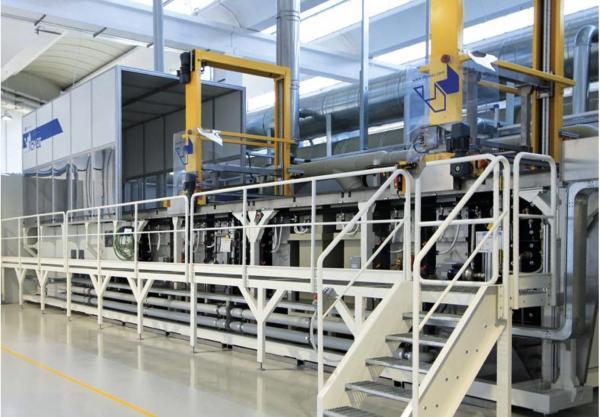In industry, metal surface treatments are used to make surfaces stronger, to protect them, to prepare them for further processing or to create specific aesthetics.
In this article we will see which are the most common treatments, why they are used and in which sectors. Furthermore, we will present the solutions that D.B.M. Tecnologie offers in this field.
Surface treatments on metal are specialised processes that modify the physical, chemical and mechanical properties of metal surfaces.
The purposes may be different. Let's look at them all.
Finally, there is the aesthetics: specific colours and finishes can improve the look of surfaces, combining functionality and design.
The most common surface treatments on metal include those that strengthen the metal surface against rust or external agents. For example, plating with chrome or nickel, galvanising or anodising, which is an electrochemical process that forms an oxidised coating on aluminium. Such treatments also include high-temperature dehydrogenation, which reduces the hydrogen concentration in metals, making them less brittle.
There are other popular treatments, which we are going to analyse.
D.B.M. Tecnologie can count on a solid experience in pickling, phosphating, phosphodegreasing, acid-etching and more. We will see all this in the next section.
Since anti-corrosion processes protect surfaces exposed to the elements, the automotive industry is one of the fields in which metal surface treatments find application. All the more so in the aerospace sector, special heat treatments give metal components and coatings a high resistance to extreme temperature variations.
In the electronics industry, certain surface treatments improve the electrical conductivity of metal surfaces. Finally, in the medical sector, specific treatments ensure that coatings applied to metal are safe, durable and compatible with human tissue.
For some of the metal surface treatments we have described, and for others we have not mentioned so far, D.B.M. solutions offer an excellent performance. The basic technology, suitably adapted, is that of washing systems.
Here are some of the surface treatments that our company can handle.
PVD treatment can have both functional and aesthetic values. In the first case, it is used on cutting tools, such as milling cutters or circular saws, to increase their hardness. In the second case, we are talking about coatings required, for example, by companies in the fashion industry or by manufacturers of taps and handles.
Even in the case of surface treatments for metals, pre-PVD and pre-sputtering treatments, D.B.M. invests in the evolution of its technologies to adapt them to the different processes, responding to the demands of companies.
Versatility with quality results and performance is our hallmark: contact us to find out how we can meet your company’s needs.
